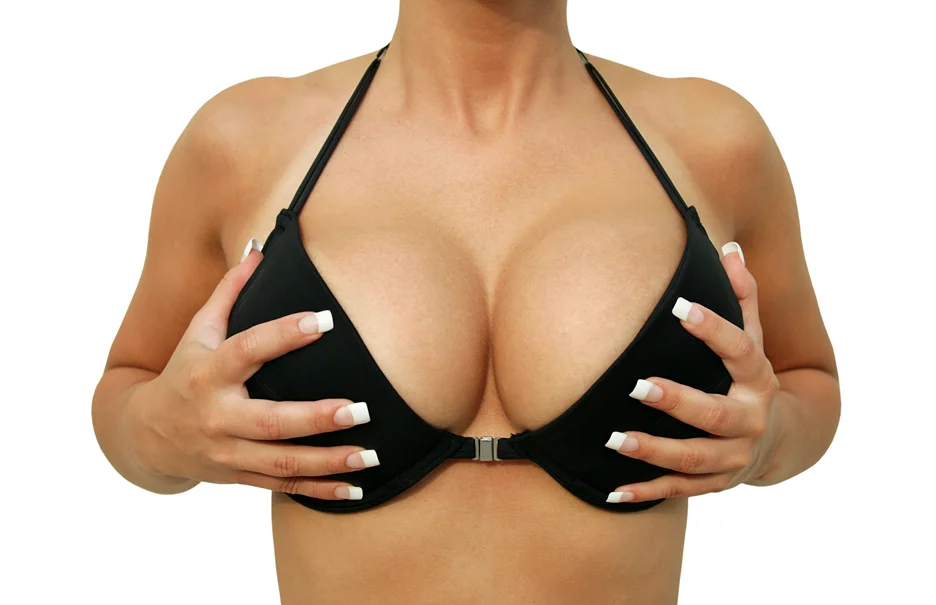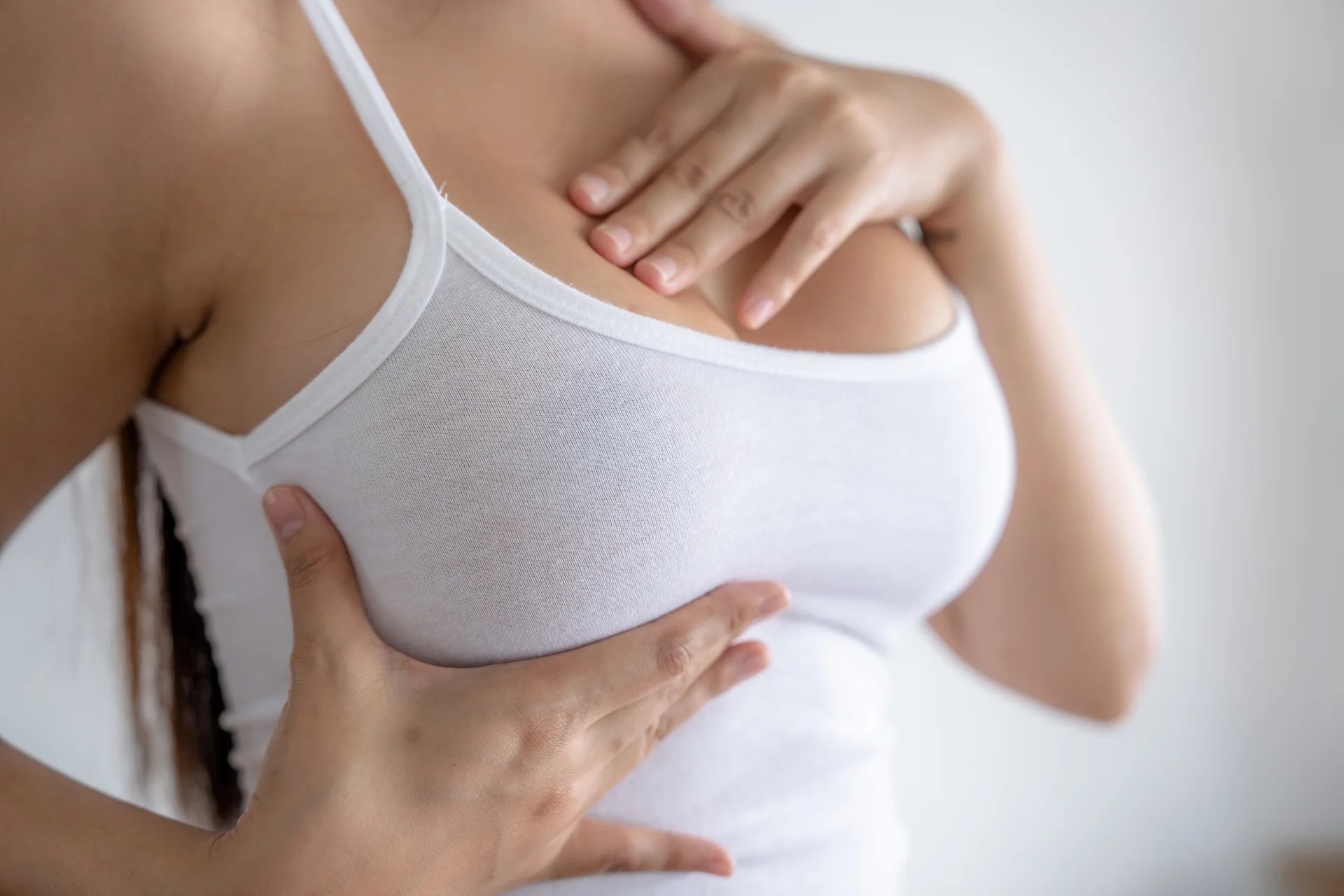The Complete Guide to Understanding Your Breast Reconstruction Options After Double Mastectomy Surgery
A double mastectomy involves removing both breasts, while breast reconstruction surgery rebuilds the breast shape after a mastectomy. These procedures can be done in sequence or separately, depending on individual needs and medical recommendations.
Losing one or both breasts to cancer can be absolutely devastating, both physically and emotionally. Breast reconstruction surgery offers a way to renew your sense of feminine identity after this life-changing procedure.
This complete guide covers everything you need to know about breast reconstruction surgery following double mastectomy.
Read on to learn about the different types of procedures available, what to expect during your consultation and recovery, key factors to consider, and how experienced plastic surgeons create beautiful, natural-looking results tailored to your unique needs.
What Is Double Mastectomy Breast Reconstruction and How Is It Performed?

A double mastectomy removes both breasts as a treatment for breast cancer or as a preventative measure for those at very high risk. Breast reconstruction recreates the shape and appearance of the breasts following this surgery. There are a few main options:
- Implant Reconstruction: Silicone or saline implants are inserted to build the breast mound. A tissue expander may be used first to stretch the skin gradually.
- Autologous Tissue Flap Reconstruction: Your own tissue from the abdomen, back, or thighs is used to reconstruct the breasts. This can create a more natural look and feel.
- Fat Grafting: Liposuction is used to take fat from elsewhere on your body to enhance the reconstructed breasts.
- Nipple/Areola Tattooing: Tattoos can recreate the nipple and areola after they are removed during mastectomy.
How Soon After Mastectomy Can Breast Reconstruction Be Done?
Timing is an important decision, and there are two options:
| 1 | Immediate reconstruction | This is done in the same surgery as the mastectomy before you wake up from anesthesia. There is no need to undergo another major operation later. |
| 2 | Delayed reconstruction | The breast is reconstructed months or even years later in a separate surgery after healing from mastectomy. Some women wish to wait until finishing cancer treatment. |
Schedule a consultation with Dr. Darren M. Smith to explore immediate or delayed breast reconstruction options tailored to your needs and preferences
How Do Recovery and Treatment Vary Between Single and Double Mastectomy Reconstruction?
Double mastectomy reconstruction is a bigger surgery with a longer recovery period than a single mastectomy. With both breasts removed, the reconstruction process must rebuild two breasts instead of just one.
The techniques used are largely the same for single versus double mastectomy patients. Implants or autologous tissue can recreate one or both breasts. But a bilateral procedure has higher risks of complications like infections, necrosis, and implant ruptures. There are also greater impacts on range of motion and sensation.
Dr. Smith will guide you through the unique aspects of recovering from double mastectomy reconstruction, including management of pain, drains, dressings, and activity restrictions for your road to healing.
Benefits of Breast Reconstruction After Mastectomy

While it cannot restore normal breast function, reconstruction offers several meaningful benefits:
- Improved Body Image – Reconstructed breasts help many mastectomy patients feel more comfortable with their appearance.
- Emotional Healing – Restoring the breast’s shape can improve self-esteem and reduce feelings of loss.
- Normal Clothing Fit – Making clothes fit more naturally is a welcome side effect for many women after reconstruction.
- Tactile Sensation – Although diminished, many patients regain some skin sensation in reconstructed breasts over time.
- Potential Cancer Detection – Reconstructed breast mounds still allow lumps to be felt and irregularities to be noticed.
- No Interference With Detection – Reconstruction does not impede mammography or cancer detection in remaining breast tissue.
Under Dr. Smith’s expert care, you can enjoy these uplifting benefits as you renew your spirit and sense of wholeness through breast reconstruction.
How Long Does Recovery Take After Breast Reconstruction Surgery?
Whether you have implant or flap reconstruction, you can expect a 6 to 8 week recovery period after surgery. Here’s what to anticipate:
| First 2 Weeks | Soreness, swelling, and bruising will be most noticeable as your incisions heal. |
| Weeks 3-6 | Discomfort and tension will gradually get better. Bruising and swelling continue to go down. |
| Weeks 6-8 | You’ll begin feeling more back to normal. Activities can be resumed. |
| Several Months | Sensation, scars, and final results will continue improving over the next 6+ months. |
Dr. Smith will provide a detailed postoperative plan so you know what to expect and how to care for your reconstructed breasts during each stage of healing. His team is dedicated to making your recovery as smooth and comfortable as possible.
Plan your journey to recovery with Dr. Darren M. Smith’s expert postoperative care and personalized guidance for a smooth healing process
Risks and Potential Complications
While serious complications are uncommon when performed by experienced surgeons like Dr. Smith, any operation carries some risks:
- Infection – Caught early, this can usually be treated effectively with antibiotics.
- Bleeding – Accumulated blood after surgery may require another operation to drain.
- Loss of Flap – Poor blood flow can cause tissue flap death. This may need reconstruction revision.
- Implant Problems – Leaks, ruptures, and capsular contracture around implants can occur.
- Fat Necrosis – Areas of fat tissue can die, creating firmness or irregularities.
- Loss of Nipple – Compromised blood flow can lead to necrosis of the nipple.
- Poor Scarring – Some patients prone to scarring may have thick, wide, or uneven incision lines.
Dr. Smith will discuss your unique risk profile at your consultation. If any complications arise during your recovery, he can quickly respond and treat them.
How Does Reconstruction Affect Future Breast Cancer Screenings?
After mastectomy, regular screenings like mammograms are only needed for the remaining natural breast, if you have one. Reconstructed breasts do not require screening.
But if you only had a lumpectomy, you will still need routine mammograms and possibly MRI or ultrasound since some original breast tissue remains that can develop future cancer. Make sure you follow your doctor’s recommendations for ongoing screenings.
Let Dr. Smith know about any screening abnormalities or concerns that come up so he can determine if further tests or biopsies are needed on your reconstructed breast to check for potential recurrence.
Is Breast Reconstruction Covered By Insurance After Mastectomy?
The Women’s Health and Cancer Rights Act passed in 1998 requires health plans that cover mastectomy to also cover reconstruction. This includes both immediate and delayed reconstruction, the implanted breast, surgery on the opposite breast for symmetry, and nipple/areola reconstruction and tattooing.
At your consultation, Dr. Smith and his team will verify your insurance benefits and clearly explain any out-of-pocket costs you can expect for your breast reconstruction, so there are no surprises. Know that the law protects your right to have breast reconstruction covered following mastectomy cancer surgery.
How Will Breast Reconstruction Affect Sensation?
Most women experience some permanent numbness in the reconstructed breast area after mastectomy surgery and the resection of milk ducts and nerves. But some feeling can return over the first 1 to 2 years as nerve endings regrow into the skin of the reconstructed breast mound.
With autologous flap reconstruction using your own tissue, there is a greater chance of regaining sensation compared to implants. However, feeling is usually decreased rather than matching the pre-surgery tactile sensitivity.
Explore the potential outcomes of breast reconstruction on sensation with Dr. Darren M. Smith, ensuring informed decisions and personalized care
What Limitations or Activities Should Be Avoided After Reconstruction?
Dr. Smith provides each patient with customized instructions for their recovery based on the specifics of their procedure. But in general, you can expect:
| Activity Limitation | Duration | Reason |
| No strenuous exercise | 4-6 weeks | Avoids raising your heart rate or blood pressure excessively. |
| No lifting over 5-10 pounds | 4-6 weeks | Overhead lifting and pushing/pulling motions are restricted. |
| No driving | 1-2 weeks | Need to feel comfortable moving your arms and reacting quickly. |
| No swimming or soaking incisions | 4-6 weeks | Wounds need time to fully seal and heal. |
| No smoking or second-hand smoke | 6-8 weeks | Smoking impedes circulation needed for optimal healing. |
| No sexual activity | 4-6 weeks | Bouncing motions can disturb implant pockets or freshly attached flaps. |
Dr. Smith’s goal is to help you get back to doing the things you love as swiftly as possible while still allowing time for proper healing. Don’t hesitate to ask him any questions about activities after surgery.
Reclaim Your Femininity and Renew Your Spirit
No one fully appreciates the emotional impact of breast reconstruction surgery more than Dr. Darren M. Smith. That’s why he approaches every patient with the utmost compassion. If you or someone you love is considering taking this emotional journey to feel whole again after breast cancer, Dr. Smith and his team will be there for you every step of the way.
To schedule a consultation and learn more about how breast reconstruction can help restore what this disease takes away, contact Dr. Smith today and experience the difference his devotion and surgical artistry provides.






